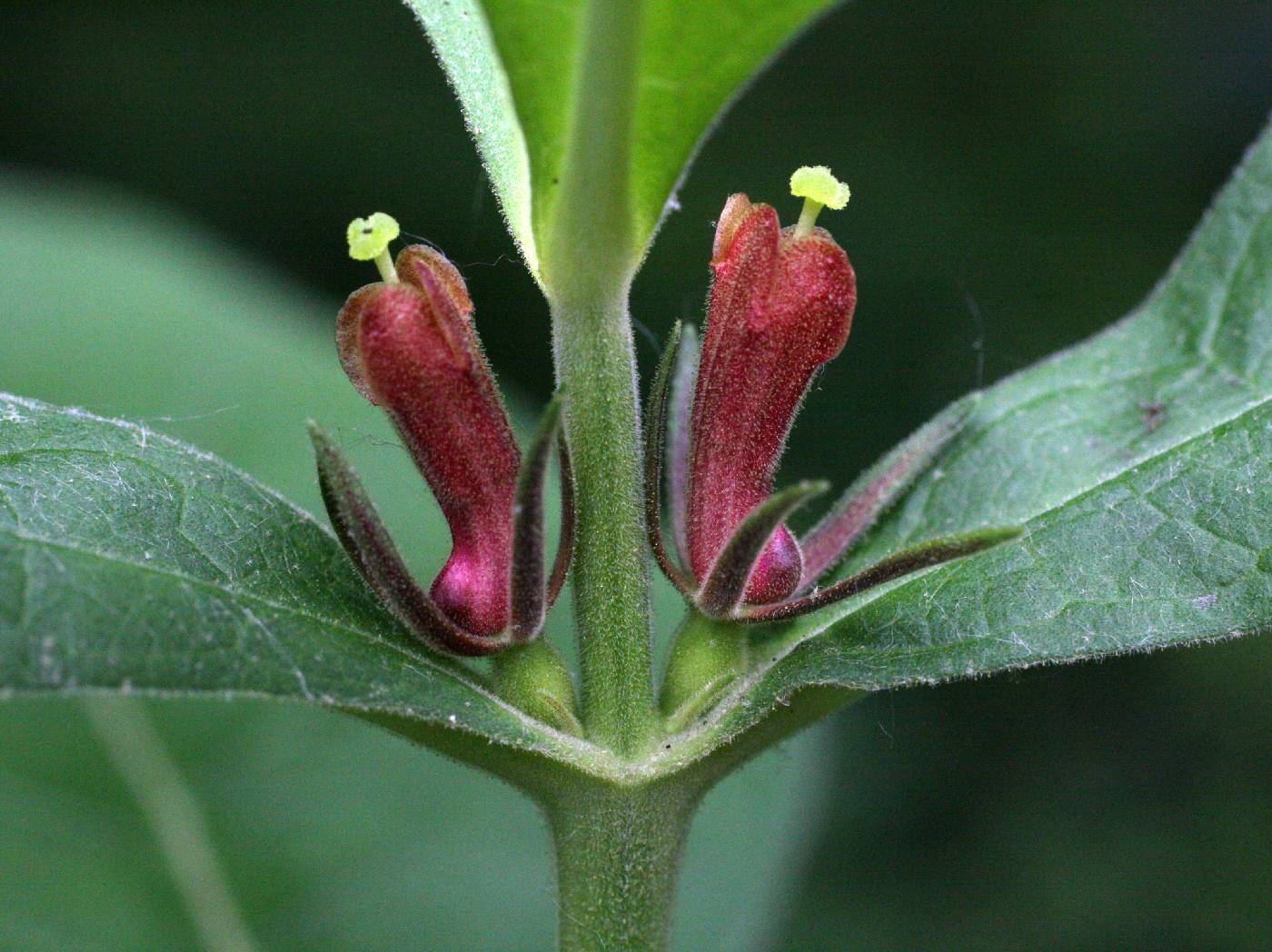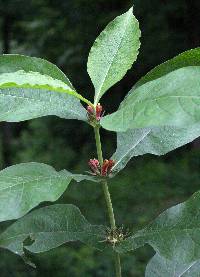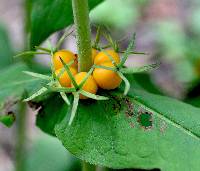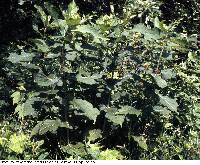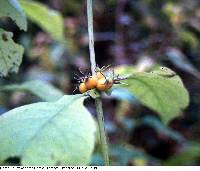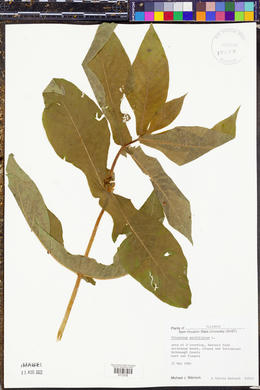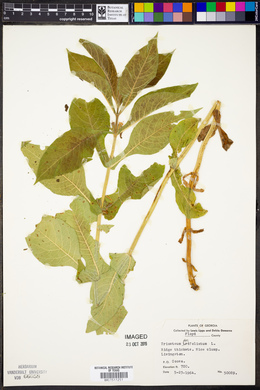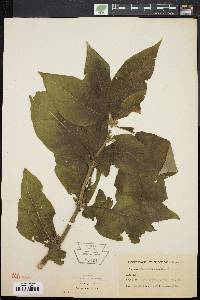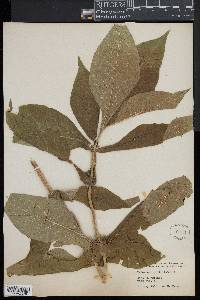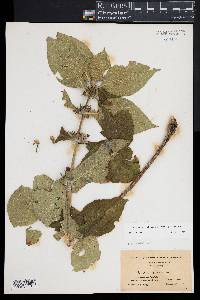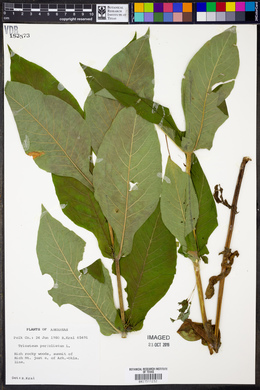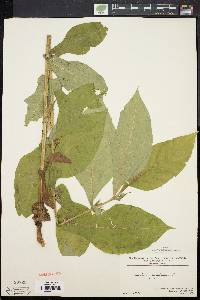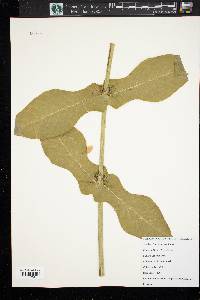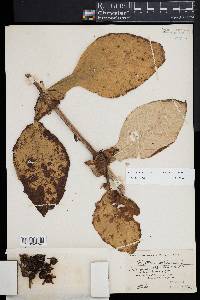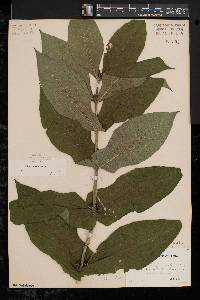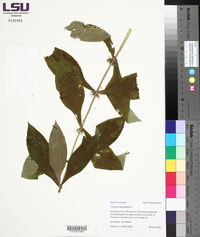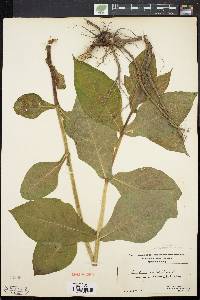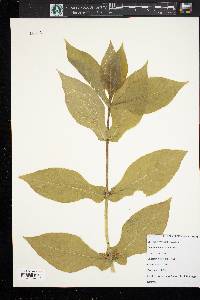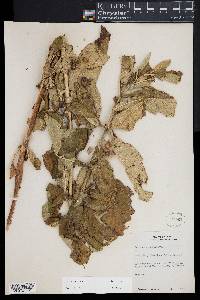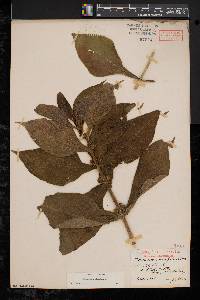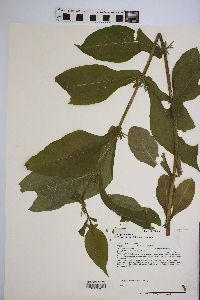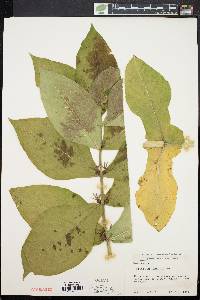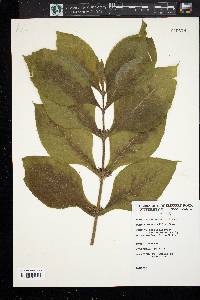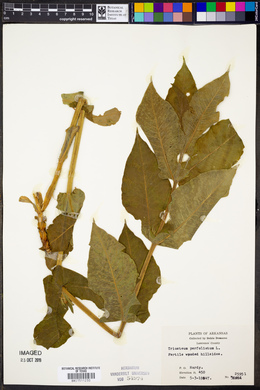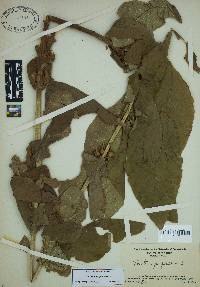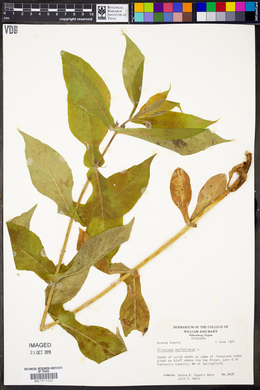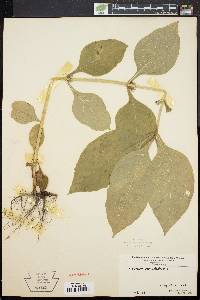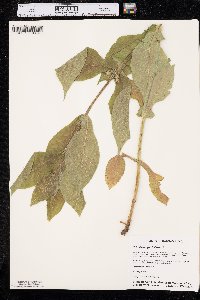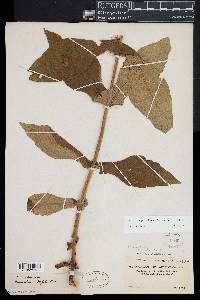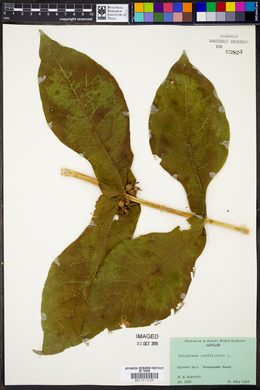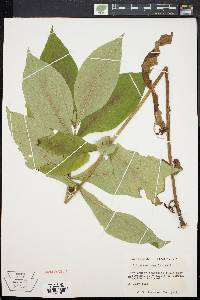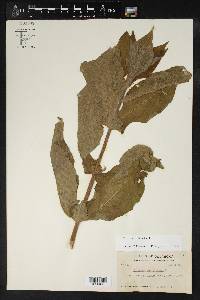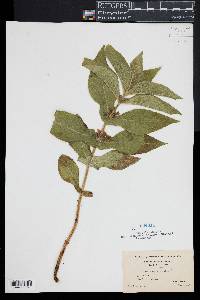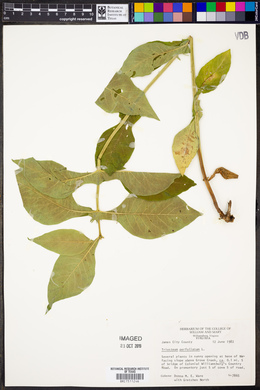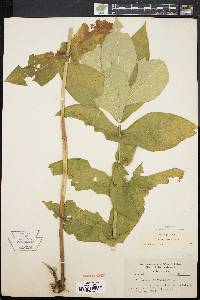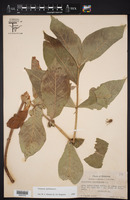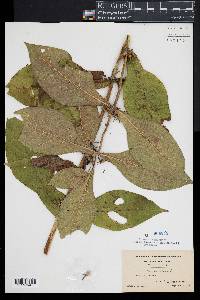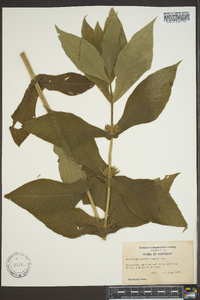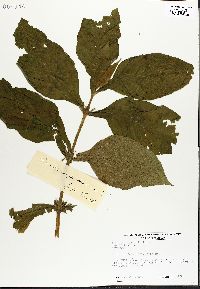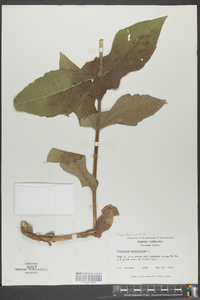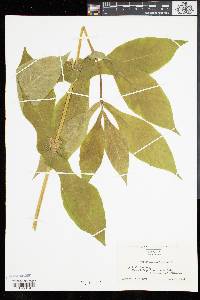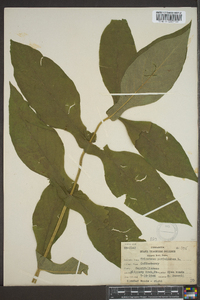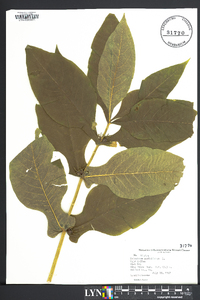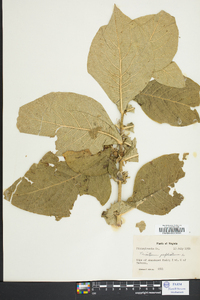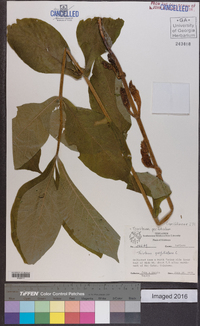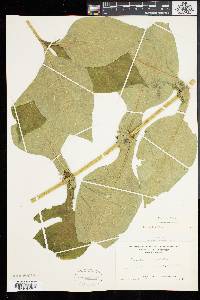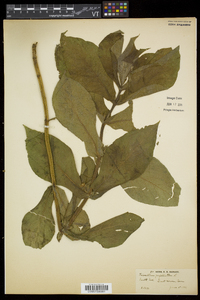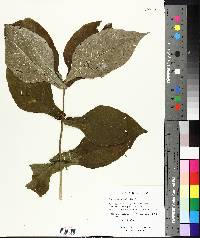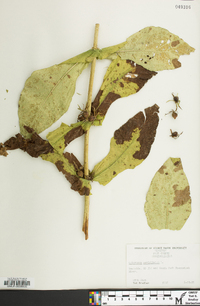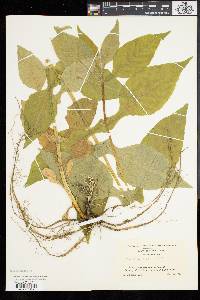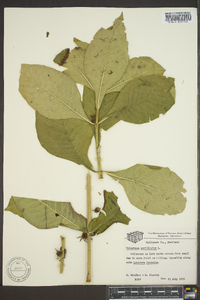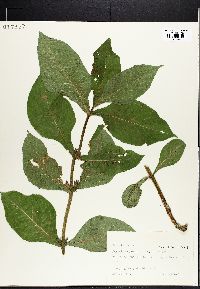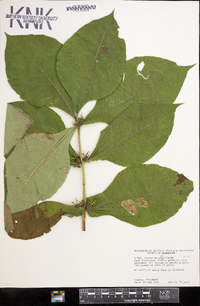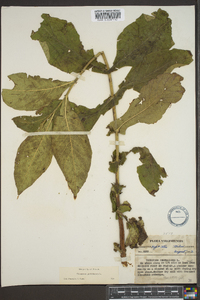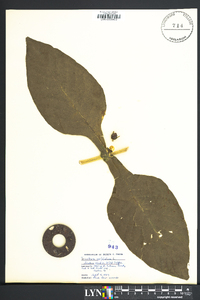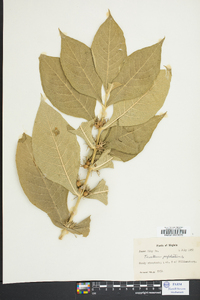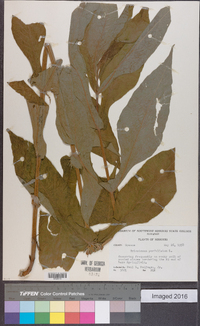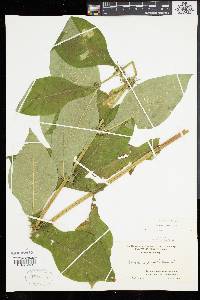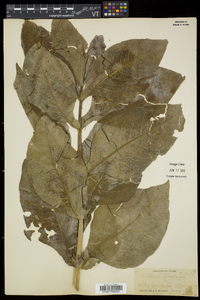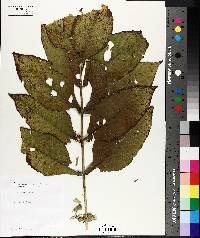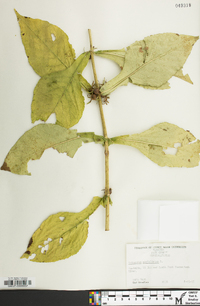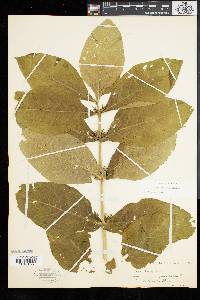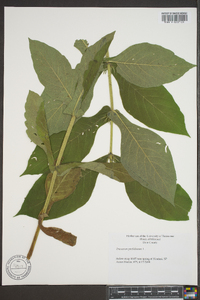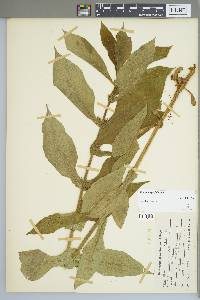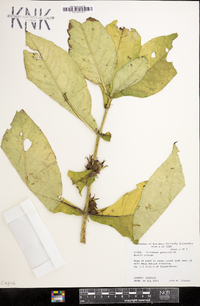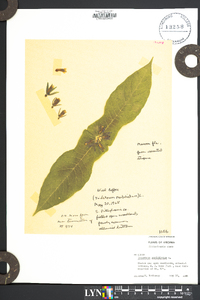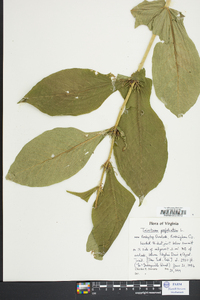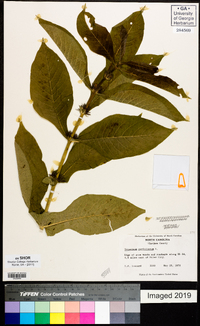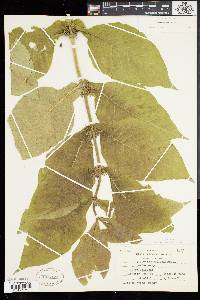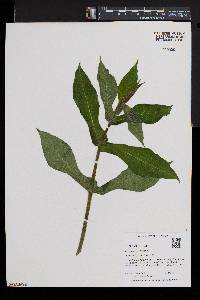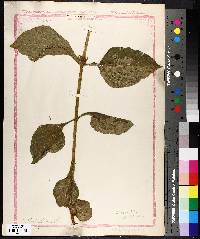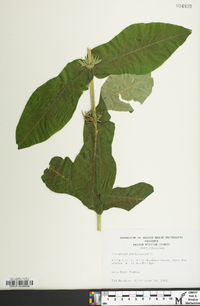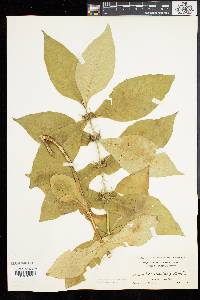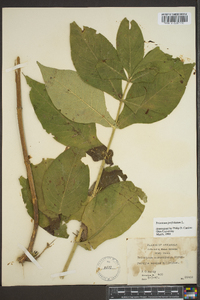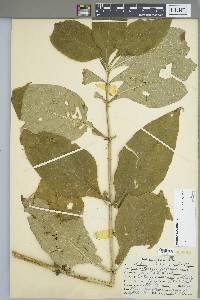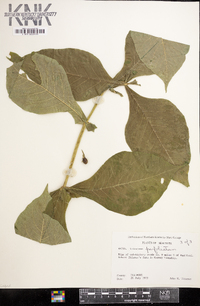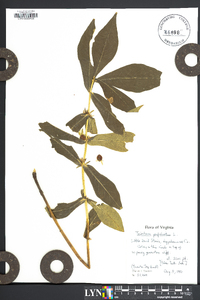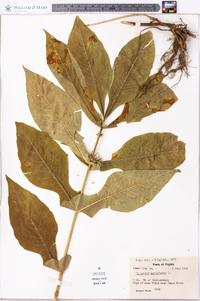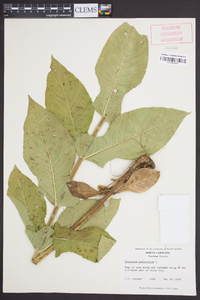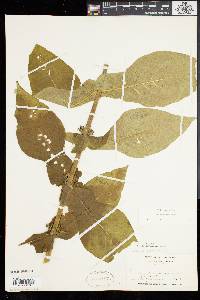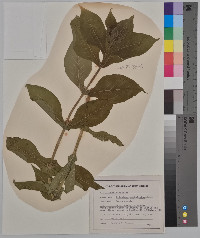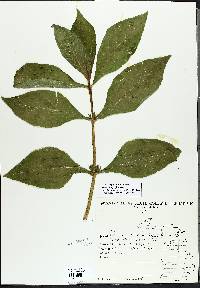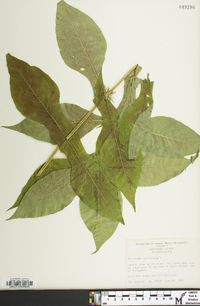Triosteum perfoliatum
|
|
|
|
Family: Caprifoliaceae
Feverwort
[Triosteum majus Michx.] |
Perennial herb to 1.3 m tall Stem: upright, coarse, sticky, densely short-hairy. The hairs are glandular and mostly under 0.5 mm long, often with longer non-glandular hairs intermixed. Leaves: opposite, stalkless, 10 - 30 cm long, 4 - 15 cm wide, broadly elliptic with broadly tapering base and pointed tip, fiddle-shaped, sometimes slightly wavy along the margins, sparsely glandular-hairy above, densely soft-hairy beneath. Bases of paired leaves fused (connate), and seemingly pierced by stem. At least three or more pairs of the leaves are connate. Flowers: one to four, in upper leaf axils. Sepals five, 1 - 1.8 cm long, about 1.5 mm wide, linear, elongate, finely hairy (often glandular) on the back and along the margins. Corolla unequally five-lobed, purplish to greenish yellow, 8 mm - 2 cm long, tubular or bell-shaped, base swollen, crisp-hairy. Stamens five. Style exserted from the corolla. Fruit: berry-like (drupe), dull yellowish orange, hairy, dry, with persistent five-lobed calyx. There are three oblong stones inside each drupe. Similar species: In the Chicago Region, Triosteum perfoliatum differs from other Triosteum species by having a combination of densely short-hairy stems, hairy corollas, exserted styles, and at least three or more pairs of leaves connate at the base. Flowering: mid-May to mid-June Habitat and ecology: Locally frequent in open woods, and occasionally found along railroads and fencerows. Often growing in thin or rocky soils. Occurence in the Chicago region: native Etymology: Triosteum comes from the Greek words treis, meaning three, and osteon, meaning "a bone" (in reference to the three stones inside the fruit). Perfoliatum means "leaf surrounding the stem." Author: The Morton Arboretum Coarse herb to 13 dm; stems crisp-hairy, the abundant hairs mostly less than 0.5 mm; lvs obovate, ovate-oblong, or subrhombic, the main ones 10-30 נ4-15 cm, narrowed below the middle but broadly connate-perfoliate at base (3-9 cm wide where united), sparsely setose above, usually densely and softly hairy beneath; fls (1-)3-4 per axil; sep 10-18 mm, ca 1.5 mm wide, finely and uniformly hairy on the back and margin, often also glandular; cor 8-17 mm, crisp-hairy, purplish to dull greenish-yellow, the style exsert ca 2 mm; frs subglobose, dull orange-yellow; 2n=18. Woods and thickets, often in thin or rocky soils; Mass. to s. Ont. and Minn., s. to S.C. and Okla. May-July. Gleason, Henry A. & Cronquist, Arthur J. 1991. Manual of vascular plants of northeastern United States and adjacent Canada. lxxv + 910 pp. ©The New York Botanical Garden. All rights reserved. Used by permission. From Flora of Indiana (1940) by Charles C. Deam There are reports of this species from all parts of the state but since those from the southern part were made before the species was divided, the only way to consider the distribution is from the specimens at hand. It is generally found in dry clay or sandy soil on white oak slopes and rarely in moist ground. Wiegand, in his article cited above, considers the following species, T. aurantiacum, as a variety of T. perfoliatum. However, they seem sufficiently distinct in Indiana to warrant treatment as species. Colonies of both species growing in the Deam garden were observed for four years, and notes were kept concerning them. T. perfoliatum was found to bloom from two to three weeks later than T. aurantiacum, and to mature its fruit correspondingly later. It is a light orange yellow when beginning to mature, gradually darkening until it is Ochraceous-Orange (Ridgway). The fruit persists well into November, resisting a temperature as low as 26 degrees without harming the plant or causing the fruit to shrivel or drop. By the latter part of October, the fruit of T. aurantiacum began to dry up and to fall. …… Indiana Coefficient of Conservatism: C = 5 Wetland Indicator Status: N/A |

